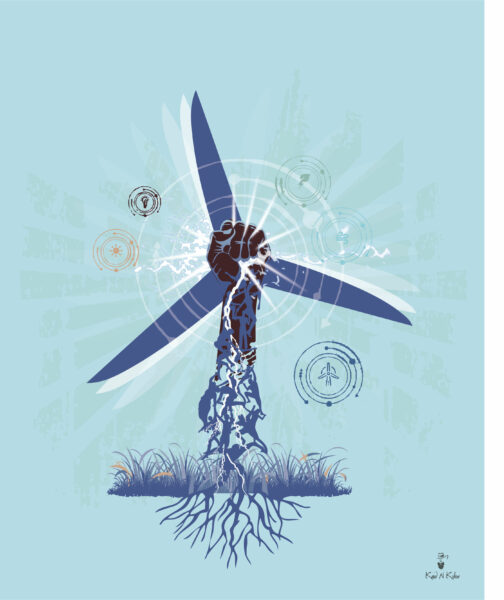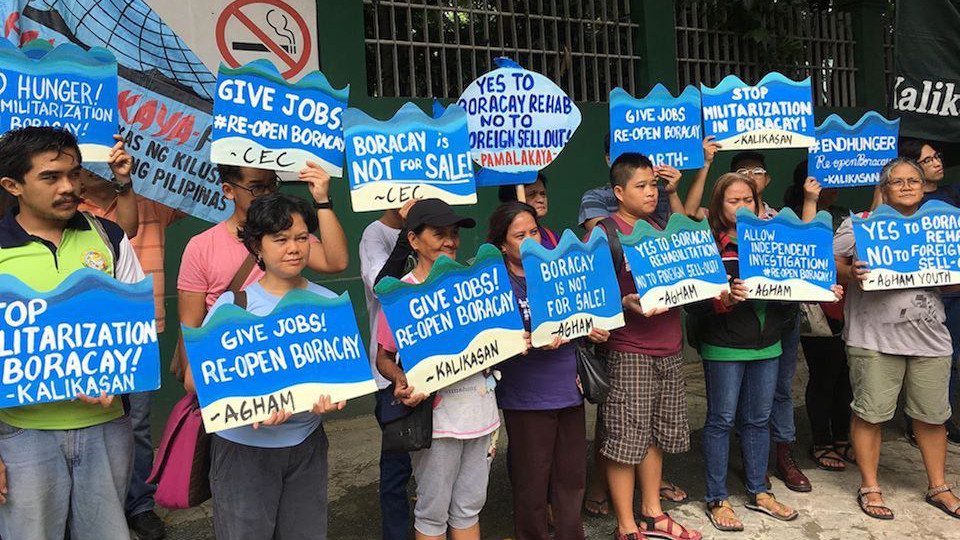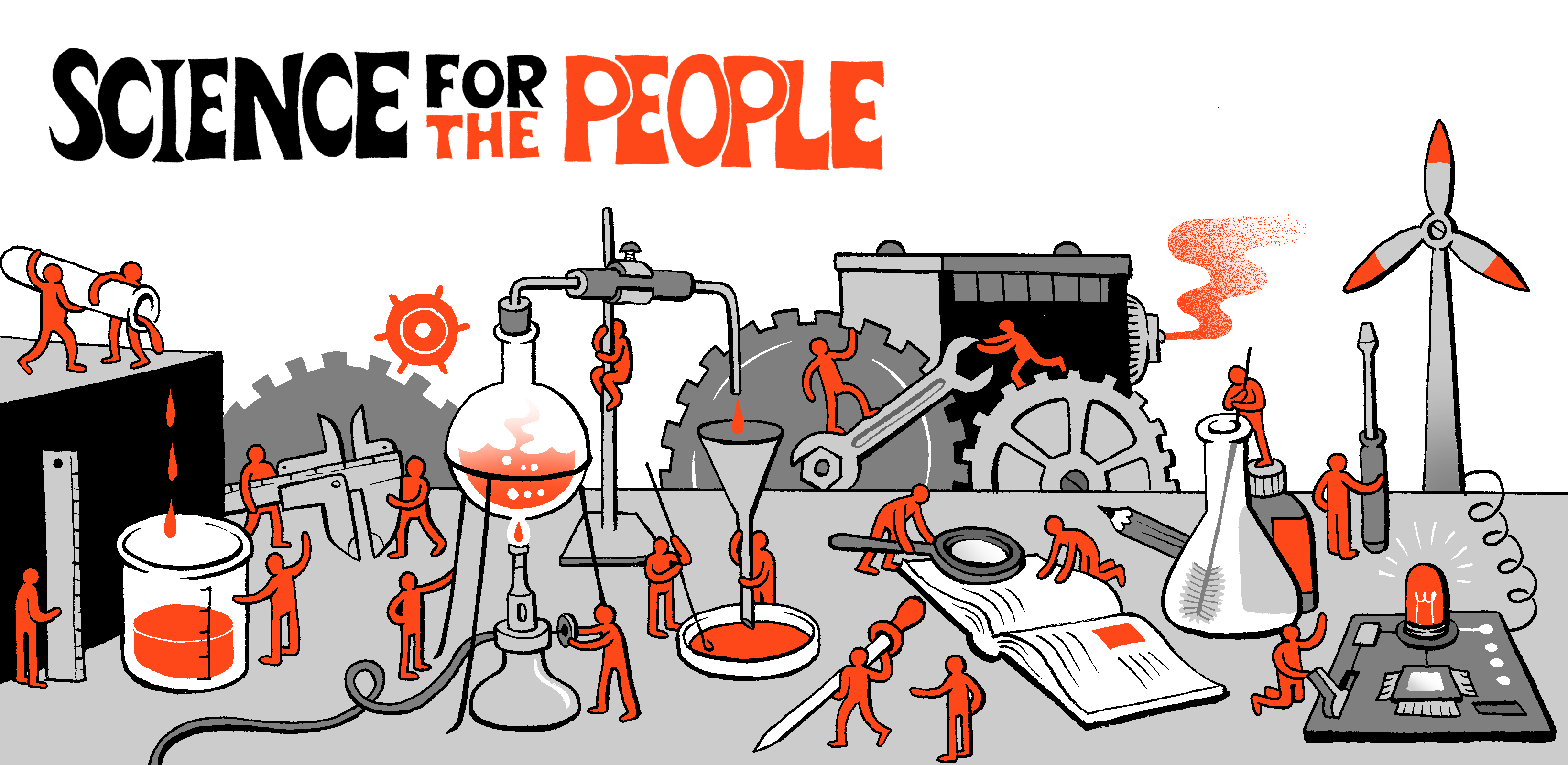Energy Democracy: Powering Communities Toward Justice and Equity
By Anthony Giancatarino and Denise Fairchild
Volume 23, number 2, People’s Green New Deal

As the storm raged and the water swelled, the city’s power went out and panic filled homes and hospital halls. The skyline was eerily dark, save for a small cluster of light emanating from a few buildings. Unfortunately, these lights of resilience were nothing but the glossy veneer of inequity.
When Superstorm Sandy struck New York City in 2012, the majority of Lower Manhattan and much of Brooklyn lost electricity. Utility disruption included 80,000 public housing residents, many elderly and sick, who went days to weeks without power being restored.1 Goldman Sachs and other financial institutions maintained power with an off-grid generator and a decentralized “World Trade Center” grid system managed by Con-Ed, the local investor-owned utility.2 The storm exposed the misdirected priorities of our energy infrastructure that values wealth and privilege over the people, particularly low-income residents and people of color living in public housing.
Imagine if the energy priorities were flipped. What if the most impacted communities, not just the powerful and resourced, could shape, decide, and build resilient energy systems? What would it mean if we thought about our energy system not as a “commodity for profit” but as a “public good”? Can we base decisions for our energy infrastructure—from generation to distribution—on racial, labor, and ecological justice? Accomplishing these goals would mean we’ve achieved “Energy Democracy.”
Energy Democracy3 is a framework that places Black, Brown, marginalized, frontline communities, and workers at the center of the decision-making, planning and implementation processes of our economic and energy infrastructure. Energy Democracy means prioritizing community governance over corporate control by shifting public investment—federal, state, and local— into ecologically regenerative energy systems instead of extractive ones. To achieve Energy Democracy we, as a society, must shift our relationship to the energy system by moving away from energy as a commodity for profit to one that is a public good.
The Green New Deal (GND) offers this possibility by calling for monumental investments in public goods including housing, healthcare, public transit, and most of all the energy system. Yet, a GND must engage the Energy Democracy framework to ensure racial equity, community governance, and investment in public resources to ensure essential goods are equitable for all. Essential goods for all, including energy, water, food, and housing, have never been more important than in the midst of the COVID-19 pandemic. If our political and economic system prioritized people’s health and wellbeing, rather than creating an extractive economy at the expense of people—the pandemic’s economic and human toll would have lessened. This is especially clear in regards to our energy system, which is deeply implicated in COVID-19 deaths. Research has found that death rates are higher in polluted Black and Brown communities4 and not all investor-owned utilities have initiated shut-off moratoriums, which puts folks who are unemployed at risk of losing an essential good.
How the New Deal and other Federal Interventions Fostered Inequity
The concept of investing in energy as a public good for public benefit is not a novel one. In 1933, President Franklin D. Roosevelt advanced the idea of public investment in energy as part of his sweeping New Deal policies.5 Similar themes were also at the root of many Civil Rights demands in the 1960s. However, in the last 50 years, public goods have shriveled up as private enterprise has ensured its own survival, just as we saw with Wall Street during Hurricane Sandy. During the original New Deal, the federal government created the Tennessee Valley Authority (TVA) on the premise that investing in energy as a public good is critical for people and the economy by counteracting price gouging by private entities, expanding benefits of electrification to marginalized communities, and creating jobs.6 Nearly eighty years later, we are calling for a similar public investment—this time in renewables to fight the climate crisis.
However, in our pursuit of a GND, we have to make sure we do not replicate the harms of an extractive economy by repeating the past mistakes of the New Deal and intensifying the racist policies of our existing government. While we celebrate the TVA and rural electric cooperatives for expanding energy access to millions, these very institutions were also built on a legacy of racism and classism. The TVA displaced Indigenous Peoples from their lands, and many rural electric co-ops were built under the rule of the Jim Crow South, which meant Black and poorer communities were often excluded from decisions or leadership posts and still have limited community control today.7 Instead of a democratically-governed public energy provider, the TVA has become a foot soldier for corporate interests.8
The TVA is just one example of how failing to prioritize racial and class solidarity in policy design and implementation leads to deeper inequity; the 2009 American Recovery and Reinvestment Act (ARRA) had similar results. Despite the best intentions, the stimulus failed to address the structural and institutionally racist processes and policies already in place within local, state, and federal programs. Significant investment went into weatherization assistance programs (WAPs) and produced short-term job opportunities, but failed to open up career pathways for Black and Brown communities into the building construction trades. Moreover, most ARRA investments went to “shovel-ready” projects in urban and suburban corridors. Yet, being “shovel-ready” (projects that can be implemented immediately if financed) requires years of prior planning, investment, and capacity building.
Therefore, the communities that were best positioned to benefit from ARRA investments in infrastructure were predominantly white and wealthy, with access to governance processes. Black, Brown, Indigenous and poorer communities, those the ARRA intended to serve, were left behind. In particular, ARRA investments in renewable energy projects for rural communities did not fully account for reviewing the historic (and current) racist lending practices at the US Department of Agriculture (as exposed by Pigford v Glickman, 1999).9 This history made it difficult for Black farmers to engage in new energy opportunities provided by the ARRA because dollars flowed through the same USDA grant processes. The legacy of debt and racist USDA practices put Black farmers at a disadvantage when the necessity to leverage their land and other assets to seek more funding arose.10
Community-Centered Solutions must shape any Green New Deal
A Green New Deal should be a long list of bottom-up demands that transforms a society and economy built upon a legacy of racial, income, wealth and health disparities into one that is anti-racist, regenerative, and just. A Green New Deal must take into account an Energy Democracy framework to challenge the very nature of power and control in politics, economics, and energy. Otherwise, we could see a new round of public investment used to prop up green corporate solutions, such as a “sustainable” World Trade Center grid.
The difficulty, however, is that energy policy is uniquely different at multiple scales: federal, tribal, regional, state, local, and in US territories. Therefore, this effort requires multiple strategies to protect and repair the harms done to communities on the frontlines. It will mean investing in community infrastructure from renewable community microgrids to equitable electrification of homes, and transforming current decision-making processes into deeply democractic ones.
To help us envision what this looks like, the Emerald Cities Collaborative and its partners spent the last eighteen months facilitating a participatory democratic process to curate the “Energy Democracy Scorecard.”11 This tool helps communities learn about their energy systems, assess where they stand on the path towards energy democracy, and organize to create change locally. While the scorecard does not offer specific policy remedies, it does offer guidance on how to determine where your community stands and what interventions are needed through four intertwined lenses: social justice, moral economy, regenerative energy, and governance. It is not enough to have 100% renewable energy; it must be done equitably. The scorecard can help communities identify the interventions they need to achieve an energy system that doesn’t leave the marginalized behind. This is an important step in building the muscle for participation at the local level to create community-driven projects for federal GND investments and avoid the pitfalls of the ARRA. What does this look like in real time?
Locally, the “Energy Democracy Blueprint,” created by Soulardarity in Highland Park, MI, offers a suite of solutions such as: investing in community leadership, building community energy planning and technical capacity, moratorium on energy shut-offs, creating community governance and accountability mechanisms, and taking control of energy systems.12 Acknowledging how energy is integrated into our economy, politics, and society, the Blueprint calls for participatory budgeting processes, equitable job creation, and long-term investments in housing repairs with resilient and sustainable energy improvements taking on displacement and green gentrification.
Statewide, efforts by the Utility Justice Campaign show how communities are demanding control of the energy system by advocating that California refuse to bail-out corporate energy companies when they fail, instead placing them into public control. Currently, the fight is over the future of Pacific Gas & Electric, a company which has been negligent (at best) in its role around wildfires and power shut-offs that impact the most vulnerable, which has asked for public funding to bail them out.13
Regionally, the Gulf South for a Green New Deal exemplifies what it means to build power to take on the entrenched energy system that has implications across any state or local border and make energy democracy a critical component to its resilience and survival during climate disasters.14 And across Mississippi, Kentucky and the Midwest, organizations such as Kentuckians for the Commonwealth, One Voice, and We Own It are reclaiming democracy by demanding that rural electric cooperatives not only move off fossil fuels, but that they create fair, transparent, and equitable processes for decision-making and share-holder benefits—particularly for Black, Brown and highly impacted communities.
Federally, the United National Frontline Table has released a suite of eighty policy solutions and demands that advocate for divestment from extraction and investments in a regenerative economy, especially in building out Energy Democracy.15
Globally, the Trade Unions for Energy Democracy are challenging us to think of the global implications of our energy system calling for public control of the energy system that prioritizes workers rights and removes the profit motive from energy decisions. Costa Rica has nearly achieved 100 percent renewable electricity through public control, offering a promising example for other countries to follow.
The GND framework offers potential opportunities for such change. The GND Resolution proposed by Rep. Alexandria Ocasio-Cortez and Senator Ed Markey calls for investing in resilient systems defined by the community. But a GND should not be a set of top-down policy actions. It must be rooted and implemented by the people: a People’s Green New Deal. How this is implemented is up to us as advocates and citizens to define through political education. We can do this through tools like the Energy Democracy scorecard, people-driven campaigns, and participatory policymaking and budgeting to practice what it means to truly have community governance over resources and systems. Through democratic community campaigns, we must ensure that our governments at all levels prioritize frontline communities, invest in community-owned decisions on the energy system, and address environmental racism and energy burdens through anti-racist governance practices.
- Albert Huang, “Hurricane Sandy’s Disproportionate Impact on NYC’s Most Vulnerable Communities.” NRDC, accessed May 14, 2020, https://www.nrdc.org/experts/albert-huang/hurricane-sandys-disproportionate-impact-nycs-most-vulnerable-communities.
- Diana Hernandez et al, “Public Housing on the Periphery: Vulnerable Residents and Depleted Resilience Reserves post-Hurricane Sandy.” Journal of Public Health 95, no. 5 (October 2018).
- Denise Fairchild and Al Weinrub, Energy Democracy: Advancing Equity in Clean Energy Solutions (Washington DC: Island Press, 2017), 1-290.
- Lois Parshley, “The deadly mix of Covid-19, air pollution, and inequality, explained,” Vox News Media, April 11, 2020, https://www.vox.com/2020/4/11/21217040/coronavirus-in-us-air-pollution-asthma-black-americans.
- Robert D. Leighninger, Long-Range Public Investment: The Forgotten Legacy of the New Deal (University of South Carolina, 2007), 1-292.
- Tennessee Valley Authority, “About the TVA”, accessed: June 15, 2020, https://www.tva.com/about-tva/our-history/public-power-transforms-real-lives.
- William E. Schmidt, “Electric Coops Facing Challenges on Racial Makeup of Boards,” New York Times, March 5, 1984, https://www.nytimes.com/1984/03/05/us/electric-co-ops-facing-challenges-on-racial-makeup-of-boards.html.
- Caitlin Myers, “Disaster Coming Down River”, Science for the People, Spring 2019, https://magazine.scienceforthepeople.org/vol22-1/disaster-coming-downriver/.
- Chris Kromm, “The Real Story of Racism at the USDA,” The Nation, July 23, 2010, https://www.thenation.com/article/archive/real-story-racism-usda/.
- For more insights around the USDA and racist practices against Black farmers, please review: https://www.nytimes.com/2019/10/04/podcasts/1619-slavery-sugar-farm-land.html and https://www.nytimes.com/2019/10/11/podcasts/1619-slavery-farm-loan-discrimination.html.
- “Energy Democracy Matrix” and “Energy Democracy Flipbook” JCET Project, accessed February 13, 2020, https://jcetproject.org/resources.
- “Energy Democracy Blueprint” Soulardarity, accessed June 24, 2020, https://d3n8a8pro7vhmx.cloudfront.net/soulardarity/pages/235/attachments/original/1568988856/BEFD-poster-LIT-BBQ-05.pdf?1568988856.
- “Utility Justice Campaign,” Local Clean Energy Alliance, accessed February 13, 2020, http://localcleanenergy.org/UtilityJustice.
- “Gulf South for a Green New Deal,” Gulf Coast Center for Law and Policy, accessed February 13, 2020.
- “A People’s Orientation to a Regenerative Economy,” United National Frontline Table, June 4, 2020, https://climatejusticealliance.org/regenerativeeconomy/.




